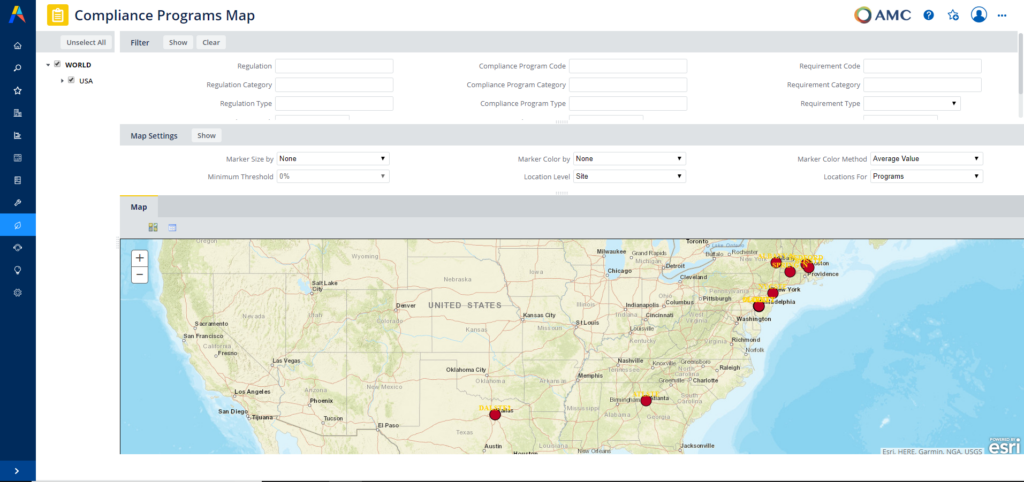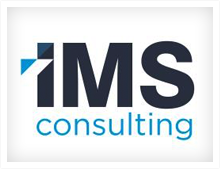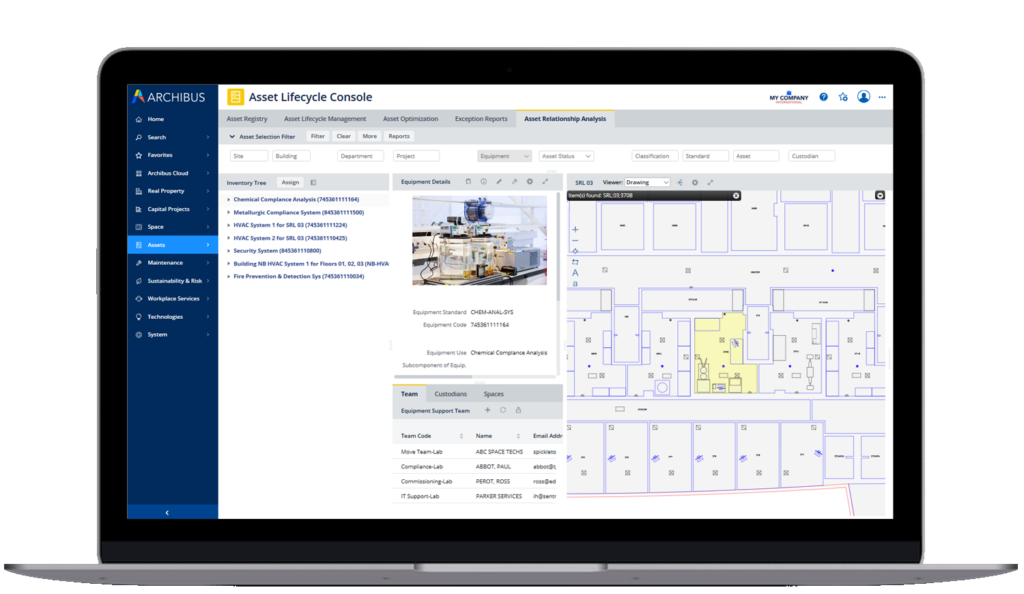In today’s regulatory environment, staying compliant with various industry standards and government regulations is more critical than ever. Non-compliance can result in hefty fines, legal challenges, and damage to an organization’s reputation. This is where the Archibus Compliance Application comes into play—an Integrated Workplace Management System (IWMS) that helps organizations maintain compliance across their operations.
Key Features of Archibus for Compliance:
-
- Centralized Data Repository: Archibus serves as a single source of truth for all compliance-related data, ensuring information is consistent, accessible, and secure. This centralized approach simplifies the management of documents, permits, and certifications.
- Automated Workflows: With automated workflows, Archibus streamlines the process of scheduling inspections, tracking maintenance activities, and ensuring timely completion of compliance-related tasks. Automation reduces human error and ensures critical deadlines are met.
- Environmental and Risk Management: Archibus provides tools for environmental sustainability and risk assessment, helping organizations adhere to environmental regulations and workplace safety standards. It enables monitoring of energy usage, hazardous materials, and indoor air quality.
- Real-time Reporting and Dashboards: Customizable dashboards and real-time reporting capabilities allow stakeholders to monitor status at a glance. Reports can be generated to demonstrate compliance to regulators and auditors.
- Integration Capabilities: The ability to integrate with other systems allows Archibus to pull in relevant data from various sources, providing a comprehensive view of compliance across different departments and functions.
 Staying on top of compliance is a complex but essential task for any organization. Archibus offers a robust IWMS solution that eases the burden of compliance management through centralization, automation, and integration. By leveraging Archibus, organizations can not only avoid the pitfalls of non-compliance but also drive operational efficiency and foster a culture of continuous improvement.
Staying on top of compliance is a complex but essential task for any organization. Archibus offers a robust IWMS solution that eases the burden of compliance management through centralization, automation, and integration. By leveraging Archibus, organizations can not only avoid the pitfalls of non-compliance but also drive operational efficiency and foster a culture of continuous improvement.
Are you ready to take control of your compliance challenges? Learn more about how Archibus can transform your compliance management by contacting us today or visiting our website for further information.
About IMS Consulting
For more than a decade, IMS Consulting has delivered the full scope of Archibus-related services to both government and commercial clients. As a Virginia Certified Small Business, IMS Consulting provides our clients with personalized attention by experienced Archibus-certified consultants. Our experts work with our clients to thoroughly understand how they do business, identify their unique needs, pinpoint opportunities to better manage their infrastructure, employ more efficient work processes, and make smarter capital budgeting decisions—both today and over the long term.
IMS Consulting specializes in the implementation of Archibus, the #1 real estate, infrastructure & facilities management solution in the world. Archibus is the global leader in streamlining how you manage your real estate, infrastructure, and facilities. Centralize your data, planning, and operations onto one seamless platform backed by 35 years of innovation and the world’s largest support network. Reduce costs, enhance sustainability, and create a better workplace by transforming how you connect with people, places, and processes.



 Emerging Trends in IWMS:
Emerging Trends in IWMS: